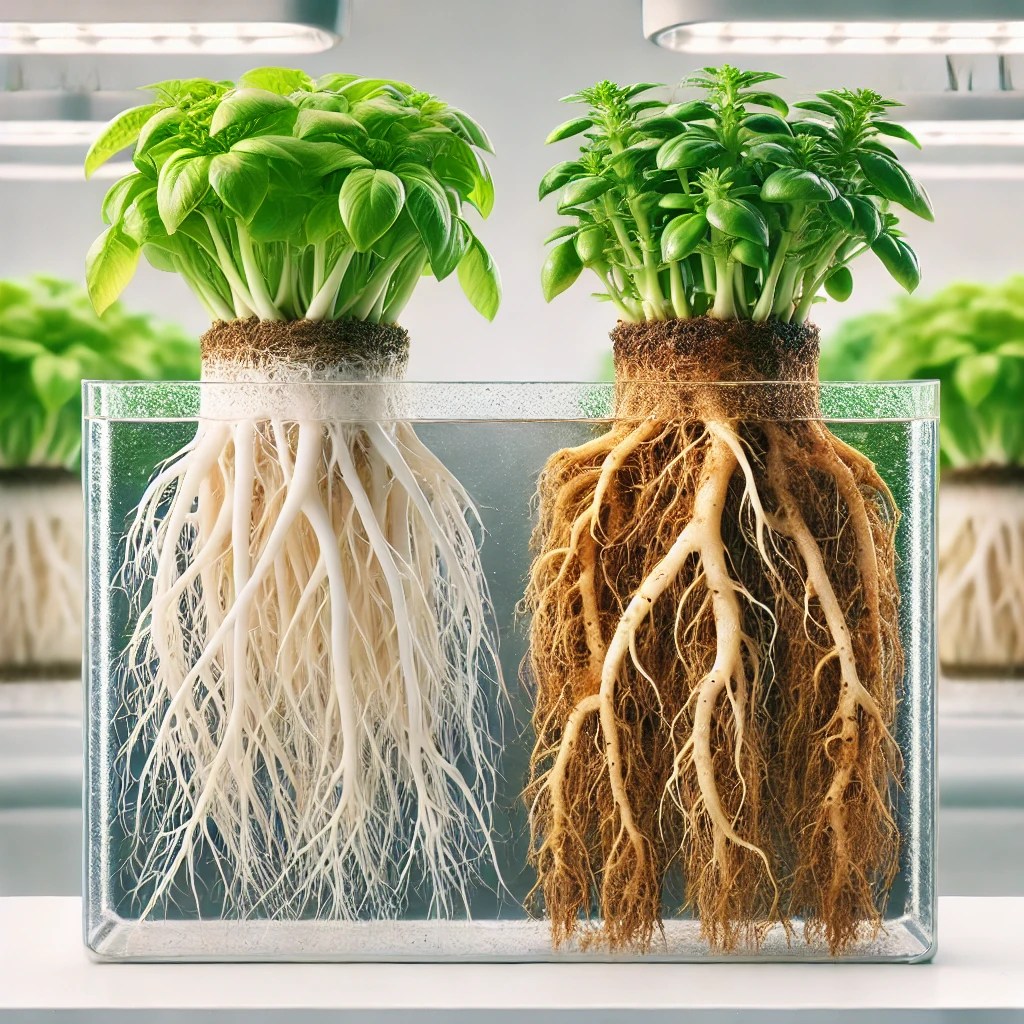Root Rot in Hydroponics

Introduction: The Silent Killer in Hydroponics
Root rot is one of the most common and destructive diseases in hydroponic farming, capable of devastating an entire crop if left unchecked. This insidious condition affects the plant’s roots, impairing their ability to absorb water and nutrients. The primary culprit is often Pythium, a pathogen that thrives in waterlogged, oxygen-poor environments. For hydroponic growers, understanding the causes, symptoms, and solutions for root rot is essential to maintaining healthy plants and maximizing yields.
What is Root Rot?
Root rot occurs when the plant’s root system becomes infected with harmful pathogens, typically fungi or bacteria. These pathogens attack the roots, causing them to become mushy, discolored, and non-functional.
Common Causes:
- Poor Oxygenation: Low levels of dissolved oxygen (DO) in the nutrient solution create ideal conditions for pathogens.
- Contaminated Water: Pathogens such as Pythium can be introduced through unfiltered or untreated water.
- Overcrowding: Dense root systems with poor airflow are more prone to rot.
- Stagnant Water: Lack of water circulation promotes pathogen growth.
Symptoms of Root Rot in Hydroponics
Early detection is crucial for mitigating damage. Look for these signs:
- Discolored Roots: Healthy roots are white or light tan, while infected roots appear brown, black, or slimy.
- Foul Odor: A sour or rotting smell often accompanies root rot.
- Stunted Growth: Plants may exhibit slow growth and yellowing leaves.
- Wilting: Despite sufficient watering, plants with root rot often wilt due to impaired nutrient absorption.
Why Root Rot is So Dangerous
Root rot doesn’t just harm individual plants—it spreads quickly in hydroponic systems. Once pathogens infect the water, they can move to other plants, creating a system-wide problem. This not only reduces yields but can lead to complete crop failure if not addressed promptly.
How SupaO² Can Help Prevent Root Rot
The SupaO² machine is a game-changer for hydroponic farmers dealing with root rot. Its advanced technology improves water quality and oxygenation, addressing the root causes of the disease:
- Increased Dissolved Oxygen: SupaO² infuses the water with stable nanobubbles, creating an oxygen-rich environment that inhibits pathogens like Pythium.
- Enhanced Filtration: The multi-stage filtration system removes harmful contaminants, ensuring clean, pathogen-free water.
- Improved Water Circulation: By enhancing water movement, SupaO² prevents the stagnation that pathogens thrive on.
Internal Link: Learn more about how SupaO² improves water quality on our Evidence Page.
Preventing Root Rot: Best Practices
In addition to using SupaO², follow these tips to minimize the risk of root rot:
- Monitor DO Levels: Aim for 8-12 ppm of dissolved oxygen in your water.
- Maintain Clean Systems: Regularly clean reservoirs, pumps, and tubing to remove biofilm and debris.
- Avoid Overcrowding: Provide ample space for root systems to grow and breathe.
- Check Water Temperature: Keep water temperatures between 18-22°C (64-72°F) to discourage pathogen growth.
Real-World Results
Growers using oxygenated water systems like SupaO² report healthier roots, reduced disease incidence, and up to 25% higher yields. Studies confirm that maintaining high DO levels can significantly reduce the presence of root rot pathogens (Hydroponics Simplified).
Conclusion: Protect Your Roots, Save Your Crops
Root rot is a formidable challenge, but it’s not unbeatable. By maintaining high water quality and oxygenation, you can protect your crops and boost your yields. The SupaO² machine provides a reliable, easy-to-use solution to combat root rot and ensure the success of your hydroponic system.
Don’t let root rot compromise your hard work. Explore SupaO² solutions today and grow with confidence.
Contact Us for more information on water purification. We would love to hear from you.
